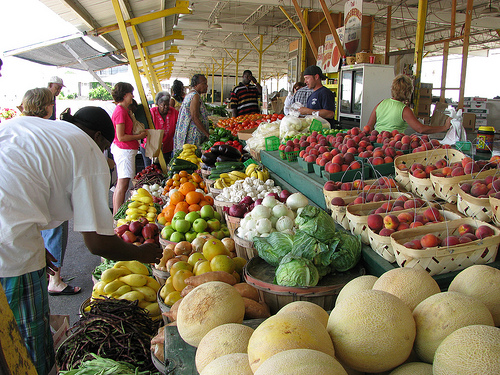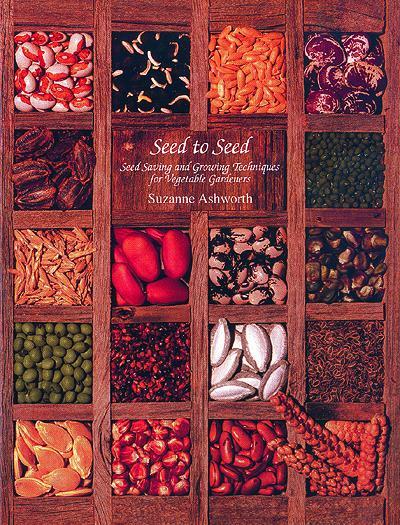 Hi, my name is Tiffany…and I am a book junkie. I love books and the fact that you can learn a lifetime worth of information from one book and be able to go back and reference it time after time, generation after generation. Don’t get me wrong, I love the Internet too, having tons of information at your fingertips; some of it great, other stuff not. But there is just something special about a printed book that the Internet will never be able to replace.
Hi, my name is Tiffany…and I am a book junkie. I love books and the fact that you can learn a lifetime worth of information from one book and be able to go back and reference it time after time, generation after generation. Don’t get me wrong, I love the Internet too, having tons of information at your fingertips; some of it great, other stuff not. But there is just something special about a printed book that the Internet will never be able to replace.
A few years ago, I joined the Seed Savers Exchange and really got more into saving seeds from our garden. One of the books which is published by the organization is Seed to Seed: Seed Saving and Growing Techniques for Vegetable Growers by Suzanne Ashworth and I just had to get a copy. (Check it out on Amazon.com or Amazon.de
.) My intention was to become active in the program and start trading seeds (because there are some active people over here in Germany as well) but life happened and I ended up mostly just saving seeds for my own garden (which IMO is a great thing as well!)
About Seed to Seed
The Seed to Seed book is a good reference material for the seed savers in town. With over 160 different kinds of vegetables, this book contains general information on the plant plus botanical classifications, flower structures, pollination habits, required population size, isolation distance, techniques for caging or hand-pollination and methods for harvesting, drying, cleaning, and storing seeds. It can well be considered an all-around ultimate guidebook for seed saving which may come very handy for home gardeners.
This book is a very useful guide for all home gardeners out there as it features very effective means to not only store but also produce seeds on a small-scale basis. You do not have to worry about the validity of the techniques being mentioned in this book because the author herself has grown all the crops that have been included in the book and the information included has been thoroughly researched and tested. What more can a home gardener ask for?
Each section of the book is broken down into botanical families and then an introduction to that family is laid out. Sections include:
- Family Taxonomy
- Pollination Characteristics and Techniques (which can be really helpful if you’re having problems getting your plants to bear fruit)
- General Production and Process Techniques (ie how one goes about getting the seeds from the family of plants in general)
Then, as the chapter on each family continues, the book goes more deeply into each genus of the species, covering not only each section above more thoroughly, but also including seed statistics for germination, how to grow those particular plants from seed most successfully and regional growing recommendations.
The Good and The Bad
PROs
- Practical and easy to understand (once you get the hang of the more technical lingo)
- Contains good information about harvest every kind of see imaginable
- Excellent reference that is a must have for any gardener
CONs
- It takes a little more time to find things by the common name since everything is done via botanical family names
- It would be great to see more photos
My Overall Thoughts
Seed to Seed is a great reference book that can be used every year you garden, over and over again. It’s a wonderful resource for anyone who wants to become more self-sufficient by saving their own seeds from all sorts of vegetables — and it will probably also help you figure out how to save seeds from other simple things like flowers and herbs as well. Saving seeds is usually not a complicated process at all, and a great way to keep your garden going year after year, as well as to help others begin a garden of their own since one usually collects far more seeds than can actually be used up in the next three or four years. The information you find in this book is far more thorough than you’d find online and it’s also a great way to support a really worthwhile organization, the Seed Savers Exchange.
Featured Natural Living Posts from Last Week’s Linky
Do you struggle to find local produce in your area? Or are you just getting started with buying local? Check out this buying guide from Rural Living Today for lots of great suggestions on where to look when you want to buy local.

photo credit: NatalieMaynor via photopin cc
Want to join in the fun and link to your own blog? You can share about anything related to natural living, from gardening to recipes to home remedies to anything else related to natural living.
Here’s how this works:
PLEASE READ THESE GUIDELINES, especially if you have never linked up before!
Posts you might want to link up could include:
- Green & natural living
- Real Food recipes
- Repurposing & upcycling ideas and projects
- Home remedies & aromatherapy
- Gardening goodness
- Sustainable smartness
- And other things related to living a more natural life
Here’s how this works:
- You are free to join the Natural Living link up at any time. You can also skip a few weeks and then come back. It’s entirely up to you.
- Please do not share more than 2 links per Link-up. If you do, I will delete the “extras.”
- Please link directly to the specific post on your blog that relates to green living — not your main blog URL.
- Please only link to your own blog or photos hosted online.
- Link back to No Ordinary Homestead or the Natural Living link up post in your blog post. This way, if someone else wants to join the fun, they can. You can either link with text or using the Natural Living badge. Below is a code for the badge above – feel free to resize it as you need. Just copy and paste this code into your post or save and upload the image to your blog: <a href=”https://www.noordinaryhomestead.com/category/natural-living/natural-living-link-up/“><img title=”natural living link up″ src=”https://www.noordinaryhomestead.com/wp-content/uploads/2012/08/noh-natural-living-linky.jpg” alt=”natural living link up” width=”300″ /></a>
- I highly encourage you to visit other participants and leave comments. This is a great way to meet new friends and become inspired about your garden! I try to visit all the blogs participating as well every week

That’s it! Share your green ideas with us by linking up at the bottom of this week’s Natural Living post!
That’s it! Share your garden with us by linking up below!





